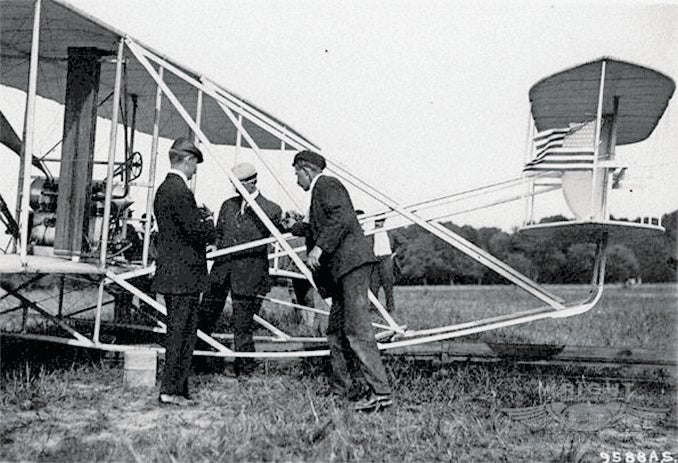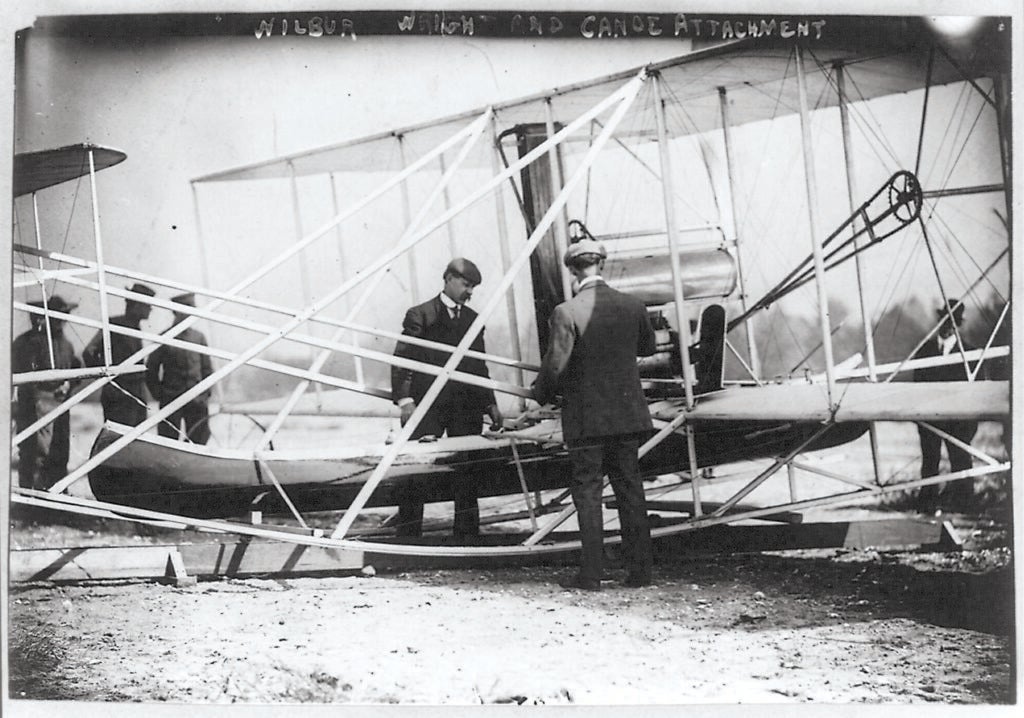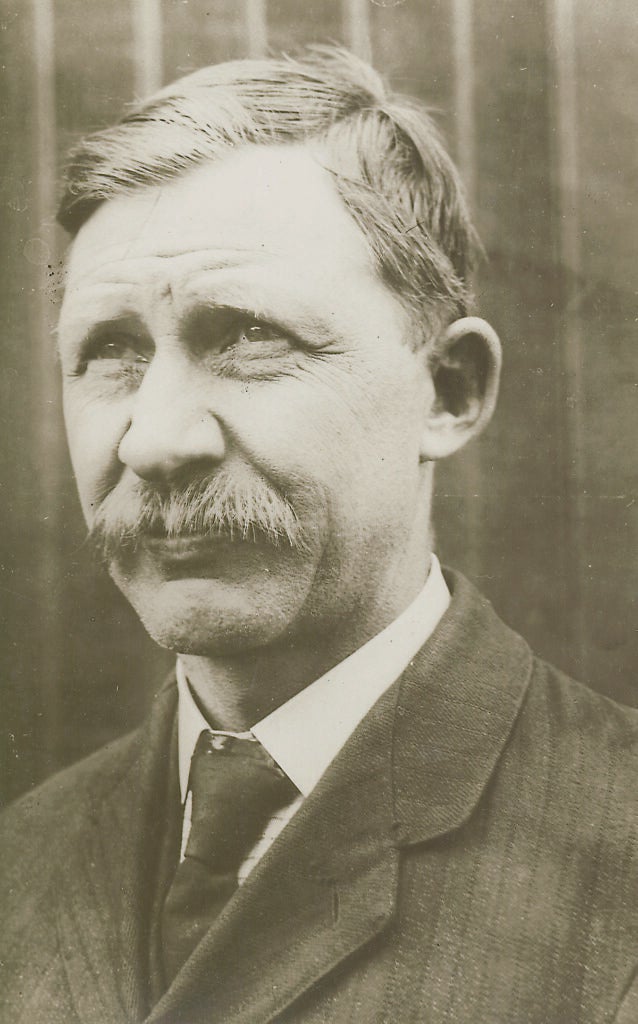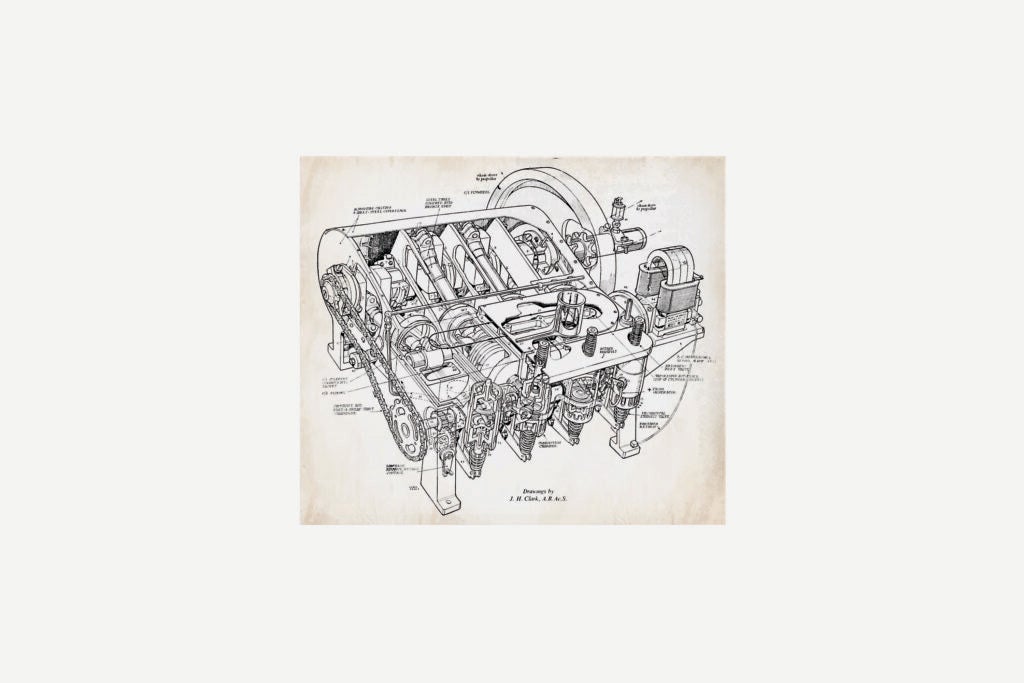The Wright brothers flew into history on December 17, 1903, achieving the once-unheard-of feat of powered flight. Although debated, the accomplishment is globally accepted as the first flight of its kind. While the Wrights earned a place in the spotlight as daring aviators, one key figure is often overlooked: mechanician Charles Taylor.
An Introduction
There is a fantastic book, Charles E. Taylor: 1868-1956 The Wright Brothers Mechanician, by H. R. DuFour with Peter J. Unitt, currently out of print. The text has a foot in two worlds, part biography and part technical manual. DuFour led a colorful life, working on the Manhattan Project in Chicago during World War II helping to develop the atomic bomb.
As with many of us, the aeronautical spark ignited early for DuFour. According to A Dream Fulfilled: The Replica of the 1903 Wright Flyer at Wright State University by Peter Unitt, DuFour noticed a photograph of the Wright Flyer on the wall of Detroit Technical High School, beginning a lifelong interest in the Wright brothers and Taylor. DuFour continued to educate people about Taylor until his death in 2009.
Quick show of hands, how many of you already knew the term “mechanician”? The Oxford English Dictionary defines mechanician as “a person skilled in the design or construction of machinery.” This term is commonly shortened to “mechanic.” Another quick show of hands: who votes we go back to the term “mechanician”? It has a certain ring to it.
If you're not already a subscriber, what are you waiting for? Subscribe today to get the issue as soon as it is released in either Print or Digital formats.
Subscribe NowHis Early Life
Charles Edward “Charlie” Taylor was born in a log cabin in rural Illinois on May 24, 1868. His family moved to Lincoln, Nebraska, after a hog cholera epidemic ended their primary income source. Leaving school in the seventh grade, Charlie worked odd jobs before returning to complete his education.
Eventually, he owned and operated a machine shop in Omaha, Nebraska, but he had to shutter it because of a lack of work. When he was 24, Charlie met the love of his life, Henrietta Webbert, in Kearney, Nebraska, and they married in 1894. Coincidently, the Wright brothers’ father, Bishop Milton Wright, a family friend of the Webberts, counseled the couple and convinced them to move to Ohio.
In Dayton, Charlie found work as a machinist for the Stoddard Manufacturing Company, building engines, farm equipment, and bicycles.
He eventually opened his own bicycle shop, and did subcontract work for two brothers who would plot the trajectory of his life.
Enter the Wright Brothers
The significance of June 15, 1901, is largely unknown. On this day, Charles Taylor began working for the Wright brothers as a bicycle technician. For me, this ranks higher than John Lennon meeting Paul McCartney on July 6, 1957, in Liverpool, England. Taylor would be the Wright brothers’ sole employee for eight years.
In 1901, Taylor built a wind tunnel so the brothers could test their wing and control surface theories. This task was his first aircraft-related assignment.
As the brothers worked to perfect their airframe, their dreams of building more than just a glider hinged on the ability to produce a reliable powerplant. The Wrights approached ten potential engine manufacturers; none was interested in building just one engine. We see this today with modern OEMs with little financial interest in investing production resources in legacy fleets. There is a profit margin in volume, not one-off pieces.
Rubin Battino, M.S., Ph.D., professor emeritus at Wright State University, is co-author of An Oral History of Charles E. Taylor: The Wright Brothers’ Mechanician, a frequent presenter on Taylor, and owns the diaries of Bishop Milton Wright.
We had a spirited discussion, and his exuberance for the mechanician and his work shone through. He spent several years touring the country, interviewing relatives of Taylor, and helping to spread the word of the first mechanic’s achievements. He is one of the world’s leading scholars of Charles Taylor, and speaking to him was an honor.
When I mentioned the Wright brothers’ search for an engine builder, Battino relayed the story of the brothers approaching Taylor. After carefully listening to the specifications, Taylor removed the cigar from his mouth and simply said, “Sure.” He started by tacking scratch paper drawings onto his workbench, assembling his tools, and gathering materials.
Once Taylor completed his four-cylinder engine, it produced 12 horsepower at 1,025 rpm, and weighed around 180 pounds. He accomplished this incredible feat in six weeks. Try getting anyone to complete a new project in six weeks these days—much less design, source, and manufacture the world’s first aircraft engine. Imagine the Six Sigma-led exploratory committees you would need today.


Working together, the three set out to solve the engineering challenges of powered flight. As the first aerospace engineers, there was plenty of trial and error. The team tested over 200 airfoils, using a jig with a bicycle spoke constructed by Taylor to check the torque on the wings. Working shoulder to shoulder, the three continued to make slow progress. Once they had a working model, it was time to test it in the field.
The aircraft could be disassembled into three parts, placed on a train to North Carolina, then put on a boat to Kitty Hawk. On December 14, 1903, Wilbur Wright said, “The machinery worked in an entirely satisfactory manner and seemed reliable. The power is ample. There is no question of final success.” To an aircraft mechanic, that signals mission accomplished. This test was the most significant ops check ever. Three days later, the trio made history.
True to his supporting role, Taylor remained in Ohio, tending the shop while the brothers flew into the history books in North Carolina.
Staying behind was not an act of humility but of necessity. The brothers relied on the shop for income and needed the spare parts Taylor produced and sent to Kitty Hawk.
In 1908 at Fort Myer, Virginia, for a military demonstration, Orville offered to take Taylor on his first airplane ride. Army observer Lt. Thomas E. Selfridge took Taylor’s place, and the aircraft crashed shortly after takeoff—badly injuring Orville and killing Lt. Selfridge, who became the first military air casualty. Taylor finally secured his first airplane ride when Orville—whom Taylor referred to as his friend—took him up in 1910.


Beyond the Brothers
When Calbraith Perry “Cal” Rodgers made the first transcontinental airplane flight across America in 1911, he purchased one complete aircraft dubbed the Vin Fiz from the Wrights and enough parts to fabricate two additional ones. Publisher William Randolph Hearst had recently announced he would award $50,000 to someone who could accomplish this feat in 30 days or less.
Knowing what lay before him, Rodgers hired Taylor, paying him $70 weekly to travel behind him in a train containing a makeshift machine shop and parts. They hit it off and shared a love of cigars, even joking that Rodgers knew how to take off but not land. Rodgers eventually logged 4,321 miles in 82 hours and 4 minutes; however, he did so in 49 days.
During this time, Taylor moved his family to California. He hoped the climate would help improve his wife’s waning health. It did not; he eventually had no choice but to place her in an institution. Staying only a while, Taylor returned to Ohio and worked for the Wright brothers until leaving for California in 1928. A failed real estate venture set him back financially, and he never recovered. He occasionally found work as a machinist, but the search was difficult because of his age.
There is a parable in here somewhere.

Charlie’s Legacy
In 1937, Taylor left California and his job at North American Aviation to join Henry Ford’s Edison Institute and assist in restoring the Wright Brothers’ bicycle shop, which Ford relocated to Greenfield Village in Dearborn, Michigan. This venture would become one of the highlights of the great mechanician’s life.
Orville Wright died on January 30, 1948, leaving Charlie Taylor the last remaining survivor of the three persons who built the first airplane. Taylor served as a pallbearer. For years Orville provided Taylor with a small pension of $800 per year, but the Great Depression took its toll, and he struggled to make ends meet.
On Christmas day in 1948, Collier’s published an interview with Taylor, living in retirement in California. The article was reprinted in Air Line Pilot in December 1978. This text is a fascinating first-hand account of the Wright brothers and their historic flight told by the man with the front row seat.
One quote, in particular, struck a chord with me and summed up Taylor’s life and legacy. He said, “I always wanted to learn to fly, but I never did. The Wrights refused to teach me and tried to discourage the idea. They said they needed me in the shop and to service their machines, and if I learned to fly, I’d be gadding about the country and maybe become an exhibition pilot, and they’d never see me again.” It is a shame Taylor never had a chance to take to the skies. I know quite a few mechanics who cross over to the cockpit, but almost none go back to make a living with a wrench fulltime.
Charlie Taylor died on January 30, 1956, at age 88, from complications with asthma—eight years to the day after his friend and former employer, Orville. Taylor rests at the Portal of Folded Wings Shrine to Aviation in Burbank, California.
I intend to travel to Kitty Hawk and the Folded Wings Shrine with a few new bucket list items on the radar. I will head to California and stand before the man who made it happen.
Godspeed to you, Charles Taylor, master mechanician; we who carry on your legacy do so with honor.


Charlie’s Awards
Here are a few awards Charles Taylor received posthumously:
- In 1965 the National Aviation Hall of Fame (NAHF) honored Charles Taylor, enshrining him and reuniting him with the Wright brothers, who entered in 1962.
- Aviation Maintenance Technician (AMT) Day is observed on May 24, Charles Taylor’s birthday, to honor the Wright brothers’ mechanician.
- On December 3, 2021, the FAA issued FAA/FS-I-8700-3(Rev.7) the Charles Taylor Master Mechanic Award Information Guide to help recognize individuals with 50 or more years of safe maintenance operations experience.
- Mr. Taylor is on the Smithsonian National Air and Space Museum Wall of Honor at Foil: 46 Panel: 1 Column: 1 Line: 10.
- In 2020 FLYING named Charles Taylor one of its 51 Heroes and Heroines of Aviation.
This column first appeared in the June 2023/Issue 938 print edition of FLYING.








